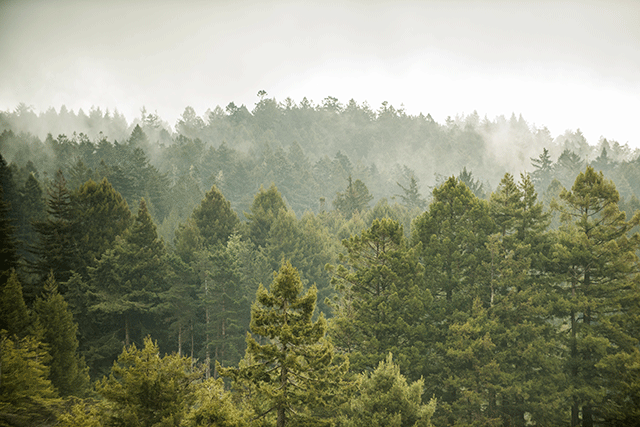
Mast seeding events release a dramatic pulse of nutrients into an ecosystem, with cascading effects on the population of seed predators (birds, rodents), and the carnivores that prey on them.
“For a squirrel, a mast seeding year, or big crop, is a rare but important event,” says Greene.
It’s also important for forest ecologists like Greene, who has spent years researching what causes such dramatic variation in tree crops.
Last year, Greene and his colleagues published their findings in the journal Nature Plants which explain the cause behind a big crop of white spruce cones. Their data shows that the mast seeding event was a product of the temperature difference between the two preceding summers.
“Imagine that you have a relatively cold summer followed by a warmer summer,” said Greene. “The influx of reproductive buds originates in that second summer. Then, a big crop shows up in the third summer as the buds emerge and turn into cones: Ultimately, the size of the crop is a function of the difference in those prior summer temperatures.”
Knowing that summer temperatures were related to crop size, some scientists have speculated that as the climate warms, trees will be forced to devote evermore resources to sexual reproduction at the expense of growth.
Greene explains that the alarm bells seem unnecessary since it is a relative difference in temperature change rather than an absolute difference.
Greene’s interest in forest reproduction began in 2006 when he noticed a huge crop of white spruce cones in eastern Canada. Looking into the existing research, he realized that little was understood about how a crop might be synchronized at a regional scale. Were mast seeding events happening across the continent related? The first step was to map a crop. Getting into his car, Greene started driving west from Montreal on the Trans-Canada highway, counting cones as he went.
Around the middle of the continent, Greene noticed a sudden reduction in the number of cones. As he drove west, cones remained scarce. The next year, Greene set out again, only to find that cone production was scarce in the east, but prolific in the west.
“2007 was almost a mirror image of 2006,” says Greene. He continued making his annual research trips through 2019 when he and colleagues began writing up their findings about the relationship between mast seeding and weather, and the divide in crop size in the middle of the continent.
“We’ve known this about weather for years,” says Greene. “When there’s a blizzard in the east, it’s often sunny in the west.” Weather on opposite ends of North America tends to be decoupled, explains Greene “This is what drives the geographic asynchronicity of the crops.”
The research also addresses what biologists call irruptions, where a bird population suddenly migrates from a region en masse. For example, crossbills are specialized to feed on conifer seeds and have undertaken huge migrations across the Canadian boreal forest when their region experienced a dearth of seeds. Researchers wondered how the crossbills could be sure that resources were more plentiful elsewhere.
“It turns out, they knew what they were doing,” says Greene.